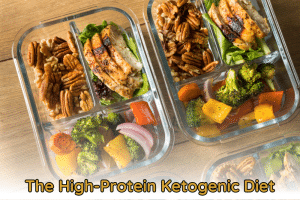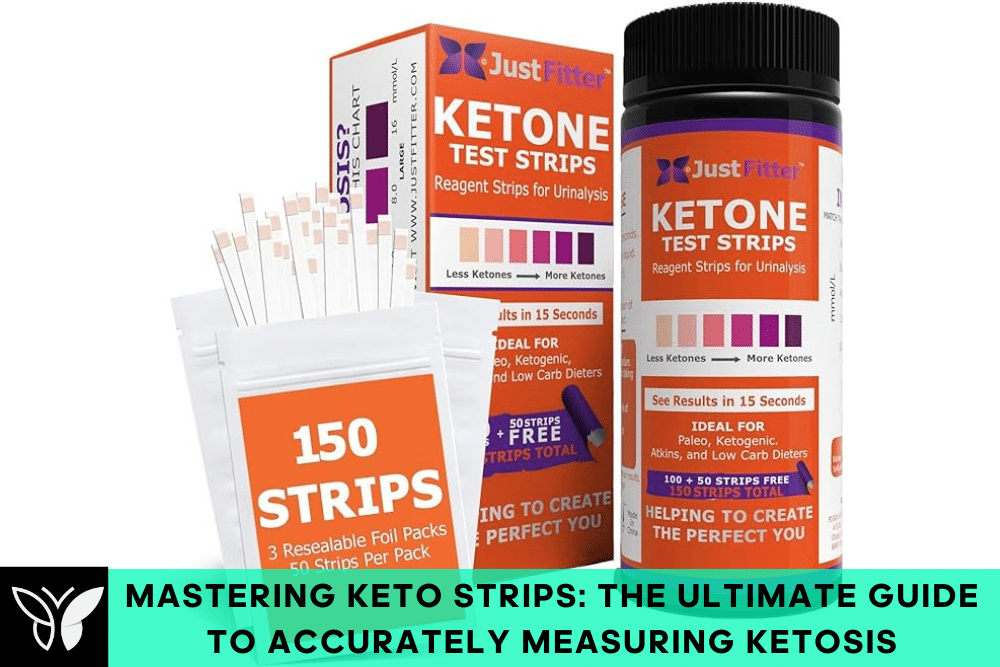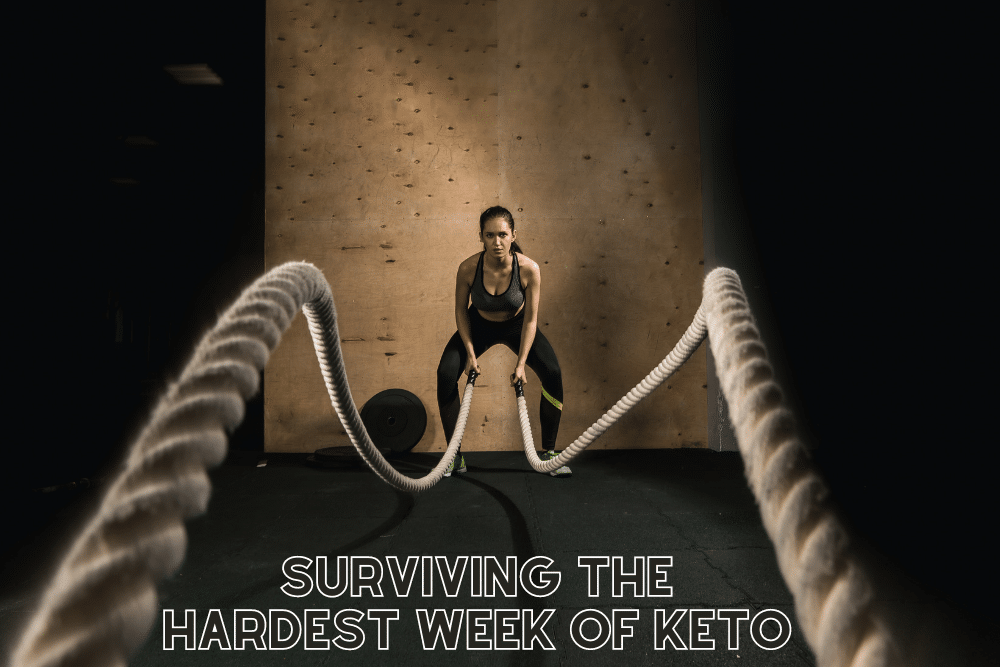Welcome to the world of the ketogenic diet, a transformative approach to eating that has taken the health and fitness realms by storm. Known for its powerful effects on weight loss, health enhancement, and performance optimisation, the ketogenic diet isn’t just a fad; it’s a lifestyle choice that many swear by. At its core, this diet shifts your body’s energy metabolism from relying on carbohydrates to burning fats, a change that can lead to significant health benefits.
But did you know there’s not just one way to go keto? That’s right. This article will demystify the different types of ketogenic diets, providing you with the knowledge to select the type that best aligns with your health objectives. Whether you’re a seasoned keto enthusiast or new to the scene, understanding these variations can help you tailor your dietary approach to fit your unique health goals and lifestyle. Let’s explore together how to make the ketogenic diet work for you.
Understanding the Different Types of Ketogenic Diets
Below are the five different types of ketogenic diets, each with its unique focus and guidelines, from options designed for those seeking to maximise weight loss and health benefits to specialised plans catering to athletes and individuals with specific nutritional needs.
1. The Standard Ketogenic Diet (SKD)

The first of the five types of ketogenic diets is the Standard Ketogenic Diet (SKD). Embarking on the Standard Ketogenic Diet (SKD) means tapping into the most traditional and extensively researched approach within the keto universe. This diet, renowned for its straightforwardness and efficiency, stands as the foundational blueprint for those looking to harness the power of ketosis.
Macronutrient Ratios
In SKD, your diet pivots around high-fat, moderate-protein, and low-carbohydrate intake. Envision your meals rich in avocados, nuts, fatty fish, and green vegetables, where 70% of your energy comes from fats, 25% from proteins, and a minimal 5% from carbs. This ratio is meticulously designed to shift your body’s metabolism from glucose to fat, igniting the ketosis flame.
Potential Benefits of SKD
By aligning with SKD’s macronutrient guide, you’re on the path to unlocking significant weight loss, a boost in mental clarity, and an even distribution of energy throughout the day. It’s a journey toward reshaping your body and enhancing your overall well-being.
Cautions for SKD
Venturing into SKD has its considerations. The drastic reduction in carbs is only suited for some, especially if you have pre-existing health conditions or dietary needs. The key is balancing and tuning into how your body responds to these changes. Prioritise a dialogue with a healthcare provider to tailor the diet to your health profile and ensure your nutritional journey is practical and safe.
➤ Summary: The Standard Ketogenic Diet offers a structured pathway into ketosis, emphasising fats as the primary energy source while restricting carbs to ignite fat burning. While the benefits range from weight loss to enhanced mental performance, it’s essential to approach SKD cautiously, mindful of its strict macronutrient ratios and the importance of adapting the diet to fit your unique health circumstances.
2. The Targeted Ketogenic Diet (TKD)

The second of the five types of ketogenic diets is the Targeted Ketogenic Diet (TKD). The Targeted Ketogenic Diet (TKD) offers a flexible twist on the traditional keto approach, allowing you to incorporate carbohydrates around your workout times. This strategy is designed to fuel your exercise sessions without kicking you out of ketosis, ensuring you have the energy to power through intense activities while reaping fat-burning benefits.
Ideal for the Active
TKD might be the perfect fit if you regularly engage in high-intensity workouts. This keto version acknowledges your body’s need for quick energy during exercise, providing a structured way to include carbs so your performance doesn’t suffer strategically.
Implementing Carbs in TKD
Timing and quantity are essential to maintain ketosis with TKD. Consuming a small amount of fast-digesting carbs about 30 minutes before your workout can give you a boost without disrupting your ketotic state. It’s about finding the sweet spot where your carb intake supports your energy needs without exceeding your body’s ability to return to ketosis post-exercise.
Potential Benefits of TKD
The Targeted Ketogenic Diet (TKD) offers you the best of both worlds: enhanced energy for high-intensity workouts and quicker muscle recovery, all while enjoying ketosis benefits. By strategically including carbs, TKD tailors to your energy needs without sacrificing the perks of a keto lifestyle, making it a perfect fit for your active life.
Cautions for TKD
When trying the Targeted Ketogenic Diet (TKD), careful monitoring of your carb intake is essential to avoid disrupting ketosis. Mis-timed carb consumption might cause energy dips rather than peaks. Finding your TKD balance might take some experimentation.
➤ Summary: TKD offers an adaptable ketogenic framework that supports the energy demands of intense physical activity while maintaining the fat-burning advantages of ketosis. Carefully incorporating carbs around workouts can fuel your performance and help you recover effectively. However, navigating TKD cautiously is essential, ensuring your carb consumption is meticulously timed and quantified to align with your ketosis and fitness objectives.
3. The Cyclical Ketogenic Diet (CKD)

The third of the five types of ketogenic diets is the Cyclical Ketogenic Diet. Have you ever felt the traditional ketogenic diet limits your high-intensity training or leaves you craving more flexibility? The Cyclical Ketogenic Diet (CKD) might be the variation you’re looking for. This approach shakes things up by introducing a dynamic rhythm to your keto lifestyle, alternating between five days of strict keto and two days of carb refeeds. This pattern is designed to keep things exciting and replenish your muscle glycogen stores, which is crucial for those diving into rigorous workouts.
Why Athletes and Bodybuilders Love CKD
If you push your limits with high-intensity performances, CKD offers a compelling edge. Including high-carb days ensures your muscles are primed with the fuel needed for endurance and strength, supporting recovery and growth. It’s about giving you the power to maintain intense training sessions without the energy dips often seen with a standard keto approach.
Navigating Carb Cycling
Committing to CKD means you’re playing a strategic game with your carb intake. Timing your carb refeeds just right keeps you moving in and out of ketosis, ensuring you don’t lose your fat-burning efficiency. This careful balance is critical to boosting muscle glycogen, aiding recovery, and optimising muscle growth—all essential for those looking to excel physically.
Potential Benefits of CKD
Beyond fueling your workouts, CKD can offer all the beloved keto benefits—like fat loss and improved insulin sensitivity—while bringing in the bonus of dietary flexibility. This added flexibility can make sticking to your diet more manageable and enjoyable in the long run.
Cautions for CKD
While the perks of CKD are enticing, it’s challenging. It demands meticulous planning and a disciplined approach. Missteps during your carb refeed days could disrupt your ketosis journey. Plus, it’s only for some; if you’re new to keto or managing specific health issues, the frequent shifts might prove too complex. Keeping a close watch on how your body responds and seeking guidance from a healthcare professional are wise moves to ensure you navigate CKD safely and effectively.
➤ Summary: The Cyclical Ketogenic Diet offers a dynamic twist for those craving energy for high-intensity workouts while still enjoying the benefits of ketosis. By smartly alternating strict keto days with carb refeeds, CKD supports your muscle recovery and increases your performance. But remember, its success hinges on your ability to manage this balance thoughtfully. For the athletes and bodybuilders among you, CKD could be the game-changer you’ve been searching for, blending rigorous training and a flexible keto lifestyle.
4. The High-Protein Ketogenic Diet

The fourth of the five types of ketogenic diets is the High-Protein Ketogenic Diet. The High-Protein Ketogenic Diet might be your perfect match if you’re venturing into the keto world but need more protein. This diet tweaks the traditional keto formula a bit, allowing you to increase your protein intake significantly. Imagine getting up to 35% of your daily calories from protein, compared to 20-25% in the Standard Ketogenic Diet (SKD). This boost is designed to support your muscle building and recovery or to keep you feeling full for longer.
How It Stacks Up Against SKD
While SKD sticks to a macronutrient distribution of about 70% fat, 25% protein, and 5% carbs, this high-protein variant shifts the balance to roughly 60% fat and 35% protein and keeps carbs at a minimal 5%. This adjustment means you can still enjoy the benefits of ketosis but with a protein boost to support your lifestyle needs.
Who Should Consider This Diet?
If you’re regularly hitting the weights, aiming to preserve muscle while shedding fat, or if higher protein meals satisfy you more, this diet could be your ally. It’s crafted for those needing extra protein to support their active lifestyle or dietary preferences.
Potential Benefits of High-Protein Ketogenic Diet
By ramping up your protein intake, you likely see improvements in muscle repair and growth, feel fuller for longer, and notice a more favourable body composition over time. The higher protein can help stabilise your blood sugar levels, curbing hunger pangs and energy dips.
Cautions for a High-Protein Ketogenic Diet
As enticing as these benefits are, keeping an eye on your protein levels is crucial. Too much can kick you out of ketosis, thanks to the body’s ability to turn excess protein into glucose. Finding the right balance of macronutrients is critical, as is tuning into how your body reacts to these changes.
➤ Summary: The High-Protein Ketogenic Diet offers an appealing twist for those looking to merge the benefits of ketosis with a higher protein intake. Whether it’s for muscle maintenance, satiety, or managing your metabolism, this diet variation brings something unique to the table. However, it requires thoughtful planning and monitoring to ensure you stay on the ketosis track while meeting your protein needs. If you’re active or crave more protein, this could be the keto pathway you’ve been looking for.
5. The Restricted Ketogenic Diet

And the fifth of the five types of ketogenic diets is the Restricted Ketogenic Diet. If you’re delving into the ketogenic world for health reasons, the Restricted Ketogenic Diet might have caught your attention. This diet isn’t just about cutting carbs; it’s a therapeutic approach designed with a specific focus on managing medical conditions, such as epilepsy and certain types of cancer, under strict calorie restriction.
Why It’s Used in Clinical Settings
For individuals battling epilepsy, this diet offers a beacon of hope where medications fall short, aiming to control seizures through nutritional means. The diet’s potential extends into cancer treatment, with the theory that limiting glucose could starve cancer cells, slowing their growth. It’s an area of active research, but the implications are hopeful.
The Necessity of Medical Supervision
Venturing into this diet is a journey you should take with others. Unlike other keto variants geared towards weight loss or lifestyle changes, this one demands careful medical oversight. It’s tailored to your unique health scenario, with regular check-ins to fine-tune your dietary plan and monitor its impact closely.
Potential Benefits of the Restricted Ketogenic Diet
Beyond its direct impact on medical conditions, this diet can deepen your ketosis, potentially enhancing metabolic health. For those with epilepsy, it could mean a significant reduction in seizure frequency, offering a semblance of normalcy. Cancer patients might find it a supportive therapy, potentially improving outcomes alongside conventional treatments.
Cautions for the Restricted Ketogenic Diet
Despite its benefits, this diet has its challenges. The calorie restriction could lead to nutritional deficiencies if not managed correctly, necessitating a well-thought-out plan to ensure you get all the necessary nutrients. Side effects might include weight loss, fatigue, and digestive issues, highlighting the importance of proceeding under expert guidance.
➤ Summary: The Restricted Ketogenic Diet stands at the intersection of nutrition and treatment, offering a unique approach to managing certain health conditions. Its specialised nature means it’s tailored to your health needs but requires strict adherence and medical supervision to navigate safely and effectively. If you’re considering this path for your health journey, consulting with healthcare professionals/dietitians is your first step towards harnessing its potential benefits while minimising risks.
Choosing the Right Type of Ketogenic Diet
Choosing the proper type of ketogenic diet for you aligns with your personal health goals, how active you are, and your everyday lifestyle. Not every keto variation will suit your unique journey. Some of you might thrive on the standard ketogenic diet, while others, especially those with high-intensity training routines, may find the cyclical or targeted approach more beneficial. Embrace personal experimentation and be open to adapting your diet over time. What works wonderfully now may need tweaking as your body, activities, and goals evolve. Remember, the best diet is the one that you can stick to while meeting your health and fitness objectives.
Conclusion on the Different Types of Ketogenic Diets

We’ve journeyed through the diverse types of ketogenic diets, from the traditional SKD to the flexible CKD and beyond. Each variation has unique benefits tailored to different health goals, activity levels, and lifestyles. Whether you’re looking to boost your athletic performance, manage a health condition, or find a more sustainable way to enjoy the benefits of ketosis, there’s a keto path for you.
Remember, the journey to finding your perfect keto fit is personal and may require some experimentation and adaptation. Don’t hesitate to dive deeper into each type, and most importantly, consult with healthcare professionals to ensure your chosen path aligns safely with your health goals. Your optimal keto diet awaits, ready to support you in achieving a healthier, more vibrant life.




